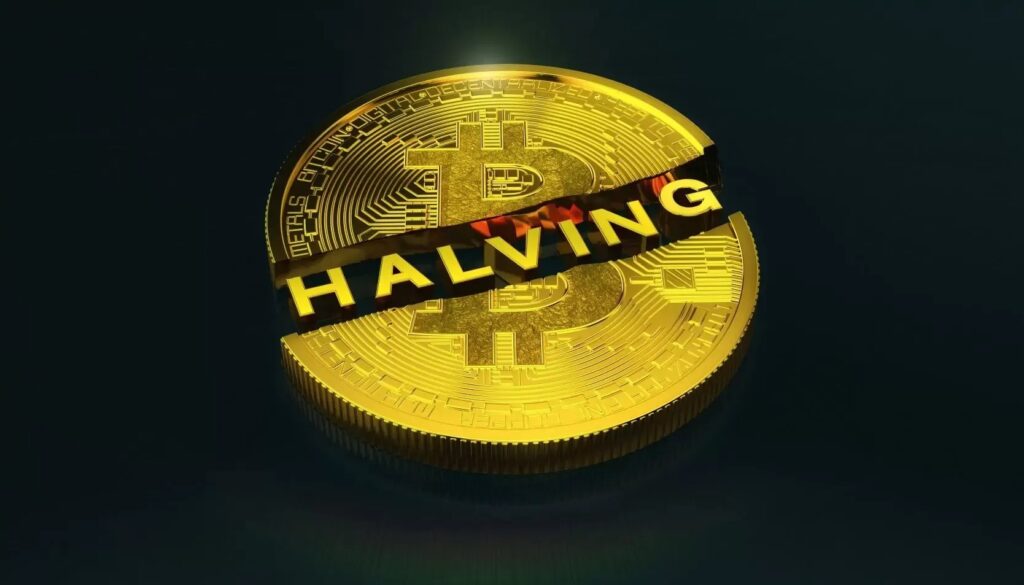In recent weeks, Bitcoin has captured global attention as it soared to unprecedented heights. On Tuesday afternoon, the cryptocurrency reached an all-time high, with one Bitcoin trading at $69,202 (£54,404). This remarkable price surpassed the previous peak of just below $69,000 (£54,242) recorded in November 2021. The surge has left investors and enthusiasts alike wondering about the driving forces behind this meteoric rise.
One key factor contributing to Bitcoin’s surge is the upcoming ‘halving’ event. Scheduled for April 19, 2024, halving occurs approximately every four years. During this event, the rate of new Bitcoin creation is cut in half. As a result, scarcity increases, and existing coins become more valuable. Investors anticipate this reduction in supply, which has fueled demand and driven prices upward.
Another catalyst for Bitcoin’s rally is the introduction of exchange-traded funds (ETFs) tied to the cryptocurrency. In January, a new ETF was launched, allowing investors to track Bitcoin’s value without directly owning it. This development has attracted institutional and retail investors, further boosting demand. Additionally, Bitcoin’s surge aligns with broader market trends. Major stock market indexes, including the US S&P 500, NASDAQ 100, and France’s CAC 40, have also experienced growth over the past year. Falling inflation rates and expectations of reduced interest rates have contributed to this positive outlook.

Halving Event
In creating Bitcoin, Satoshi Nakamoto introduced a novel economic event to the world known as the halving. The halving (sometimes referred to as “the halvening”) is the moment when Bitcoin’s block subsidy gets cut in half. It’s a mechanism designed to control the issuance of new bitcoin, which influences the asset’s value over time.
Here’s how it works: Approximately every four years, the Bitcoin network undergoes a halving event. During this event, the reward for mining Bitcoin transactions is reduced by 50%. In other words, miners receive fewer bitcoins for their computational efforts. This deliberate reduction in the rate at which new coins are created serves two critical purposes. First, it ensures that the total supply of bitcoins remains capped at 21 million—the theoretical maximum supply. Second, it contributes to scarcity, making existing bitcoins more valuable. As of the most recent halving on April 19, 2024, the block reward stands at 3.125 BTC1. The final halving is expected to occur in 2140, marking the point when the total number of bitcoins in circulation reaches the maximum limit1. By controlling the issuance of new coins, Bitcoin’s halving events play a pivotal role in shaping its long-term value and maintaining scarcity in the digital gold of the 21st century.
Remember, the halving events are fundamental to Bitcoin’s monetary policy and contribute to its unique economic model. As we approach future halvings, the crypto community eagerly anticipates their impact on the market and the continued evolution of this groundbreaking digital currency.
ETF Launch
The introduction of Bitcoin-related ETFs has been a significant development in the cryptocurrency market. These financial products allow investors to gain exposure to Bitcoin’s price movements without directly owning the digital asset. Here’s how it works: An ETF provider creates a fund that holds a basket of Bitcoin or Bitcoin futures contracts. Investors can then buy shares in this fund, which are traded on traditional stock exchanges. Essentially, ETFs democratize access to Bitcoin, making it more accessible to both retail and institutional investors.
The availability of Bitcoin ETFs has attracted new capital into the crypto space. Investors who were previously hesitant to navigate the complexities of private wallets, exchanges, and custody solutions can now participate through familiar brokerage accounts. This increased demand has contributed to Bitcoin’s price surge.
The approval and launch of Bitcoin ETFs signal a level of regulatory acceptance and mainstream recognition. As traditional financial institutions embrace these products, it validates Bitcoin as a legitimate investment asset. Institutional investors, including hedge funds and pension funds, are now exploring ETFs as a way to diversify their portfolios.
Market Context
Major stock market indexes, such as the US S&P 500, NASDAQ 100, and France’s CAC 40, have experienced growth over the past year. Investors have been optimistic due to falling inflation rates and expectations of reduced interest rates. As traditional equities perform well, some of that positive sentiment spills over into the cryptocurrency space.
The global economy has faced challenges, including pandemic-related disruptions. However, as economies recover, investors seek higher returns. Bitcoin, often considered a hedge against inflation and currency devaluation, attracts attention during uncertain times. Falling inflation rates and concerns about fiat currency stability drive interest in alternative assets like Bitcoin.

Previous Challenges
Bitcoin’s journey has been marked by extreme volatility. After reaching its previous highs in 2022, the cryptocurrency faced significant headwinds. The onset of the pandemic triggered widespread panic, leading investors to retreat from risky assets. Bitcoin, often considered a speculative investment, was not immune to this trend. As borrowing costs increased and inflation rose, many sold off their holdings, causing a sharp decline in its value. These sell-offs highlighted the inherent risks associated with cryptocurrencies and underscored the need for caution.
Another challenge for Bitcoin lies in its regulatory landscape. While the cryptocurrency has gained popularity, it remains largely unregulated. Governments and financial authorities worldwide grapple with how to approach digital assets. Some countries have embraced cryptocurrencies, while others have imposed restrictions or outright bans. This regulatory uncertainty affects investor confidence. Additionally, reports indicate that nearly five million Britons have purchased cryptocurrencies, but 45% of them suffered losses. As more people enter the market, understanding the risks and navigating the evolving regulatory environment becomes crucial.
Regulatory Landscape
In 2022, we witnessed a surge in geostrategic risks, notably driven by events such as the war in Ukraine and US-China tensions. These geopolitical shifts have led to a reversal of globalization trends, with countries prioritizing national and regional security. Consequently, strategic rules and laws have been influenced by considerations around strategic autonomy and broader political factors. Examples include the European Union’s (EU) third-country branches regulations, India’s financial data processing laws, and state-level policies in the US related to environmental, social, and governance (ESG) issues.
Economic challenges worldwide have prompted conduct regulators to broaden their focus beyond financial inclusion. They now consider the overall impact of financial products and services on customers. It’s not just about equitable access; it’s about assessing the positive or negative effects of these offerings.The UK, for instance, has taken significant steps in this direction with the Financial Conduct Authority’s (FCA) new Consumer Duty rules, effective from 2023. These rules emphasize the need to consider customer outcomes and fairness in financial services.
The oversight of digital assets, including stablecoins and other crypto assets, continues to evolve. Regulators are grappling with striking the right balance between innovation and investor protection. The crypto market’s volatility, as seen in the plunge of most crypto asset prices in 2022, underscores the need for regulatory clarity. Achieving the right level of oversight while fostering innovation remains a challenge. Regulators worldwide are closely monitoring developments in the digital asset space to ensure market integrity and investor confidence.

Conclusion
In conclusion, Bitcoin’s recent climb to new highs reflects its resilience as a digital asset. Despite facing challenges such as volatility, regulatory uncertainty, and market fluctuations, Bitcoin continues to capture the imagination of investors and enthusiasts worldwide. Its decentralized nature, scarcity, and potential as a hedge against inflation contribute to its allure.
As we look ahead, caution remains essential. The crypto market is dynamic, and risks persist. Investors should stay informed, diversify their portfolios, and carefully assess their risk tolerance. Regulatory developments will play a pivotal role in shaping Bitcoin’s future. Whether it’s the emergence of ETFs, the impact of halving events, or the evolving global regulatory landscape, staying informed is key.





Add comment